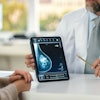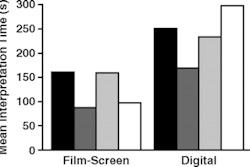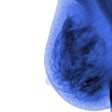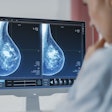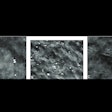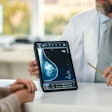Ever since results from the Digital Mammographic Imaging Screening Trial (DMIST) of 2005 were released, clinicians have been sorting through the study's data to gain real-life information on how digital compares to film-screen mammography.
At the recent RSNA meeting in Chicago, researchers from Europe and the University of California, Los Angeles (UCLA) presented studies that support the conclusion that full-field digital mammography (FFDM) is equal to or better than analog for screening programs, with users of several different types of FFDM technology reporting good results.
Irish screening program
In one of the first and largest studies of a fully digital population-based screening program, Dr. Niamh Hambly of Mater Misericordiae University Hospital in Dublin, Ireland, and colleagues sought to evaluate FFDM's performance compared to film-screen mammography. The team looked at recall rates, cancer detection rates, biopsy rates, and positive predictive value.
The Irish National Breast Screening Program (INBSP) introduced FFDM in 2005; 16% of participating women have been screened on digital units to date. The program became fully digital in April of 2007.
Hambly's study reviewed all women who had been screened by the INBSP between January 2005 and September 2007, a total of 163,031 women. Of this total, 26,593, or 16.3%, were screened with FFDM. Women were subcategorized into those receiving their first screening and those undergoing a second or subsequent screening.
The team found comparable results between FFDM and film-screen mammography.
|
The study also found that 22.3% of the cancers found in women screened with FFDM were ductal carcinoma in situ (DCIS). In the women screened with film-screen mammography, 18% of the cancers were DCIS.
Norway: FFDM with photon-counting detector
A second European study demonstrated that another type of FFDM technology, based on a photon-counting detector, is also well suited for digital mammography screening. Dr. Inger-Marie Juel and colleagues in Norway performed a study at a county hospital that included 14,375 women from a program that participates in the Norwegian Breast Cancer Screening Program.
The participation rate was high, according to Juel: 83% of women in the rural district of Sogn og Fjordane County attended.
"The women traveled by bus or by car, some for more than 12 hours, to participate in the study," Juel said.
Of the total number of women included, 7,442 received analog mammograms between January 2005 and June 2006 (Mammomat 3000 Nova, Siemens Healthcare, Erlangen, Germany); 6,933 women received FFDM screening between July 2006 and December 2007 with a unit that included a photon-counting detector (MicroDose Mammography D40, Sectra, Linköping, Sweden).
Juel's group found that the detection rate was higher for FFDM than for film-screen, but other values were comparable.
|
The team found that the proportion of DCIS was 6.5% (two of 31) for film-screen and 18.2% (six of 33) for FFDM. It also found that the positive predictive value for women who went on to have biopsies was 40.8% for film-screen mammography and 44% for FFDM.
And FFDM with photon-counting technology has another benefit, according to Juel. "We found the radiation dose to be lower with the digital unit than with the film-screen mammography device," she said.
FFDM doesn't increase callback rates
In another study presented at the RSNA conference, Dr. Kristin Dittmar and colleagues at UCLA examined whether the use of FFDM has increased callback and biopsy rates compared to analog mammography.
UCLA switched to digital mammography for all patients in 2005. For the study, Dittmar reviewed mammograms that led to callbacks and biopsies 20 months before and 20 months after digital had been instituted. Mammograms assessed as BI-RADS 0, as well as those assessed at 4 and 5 that prompted biopsies, were analyzed against pathology-proven diagnoses.
Dittmar's team found that a total of 559 biopsies were performed before and 489 were performed after digital mammography was instituted. Overall callback and biopsy rates were unchanged, and the rate of malignant biopsies to total biopsies remained unchanged as well. The rate of malignancies detected by biopsy before digital mammography was implemented was 37.6%, and the rate after was 34.8%.
By Kate Madden Yee
AuntMinnie.com staff writer
January 6, 2009
Related Reading
Norwegian mammo study claims to find cancer 'spontaneous regression,' November 24, 2008
Ethnic background influences mammography compliance, study says, November 5, 2008
Breast cancer mortality falls soon after start of screening programs, October 14, 2008
Free mammography still carries some costs, September 26, 2008
Breast cancer cases to climb in China, study, September 25, 2008
Copyright © 2009 AuntMinnie.com


